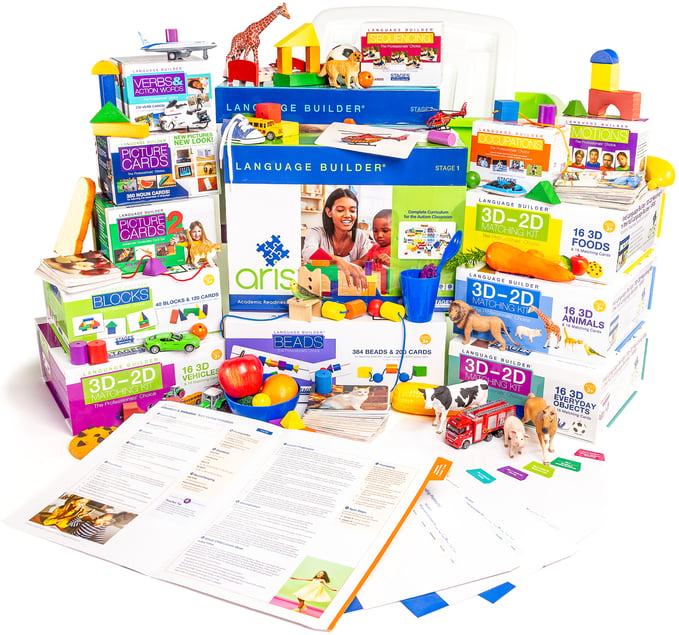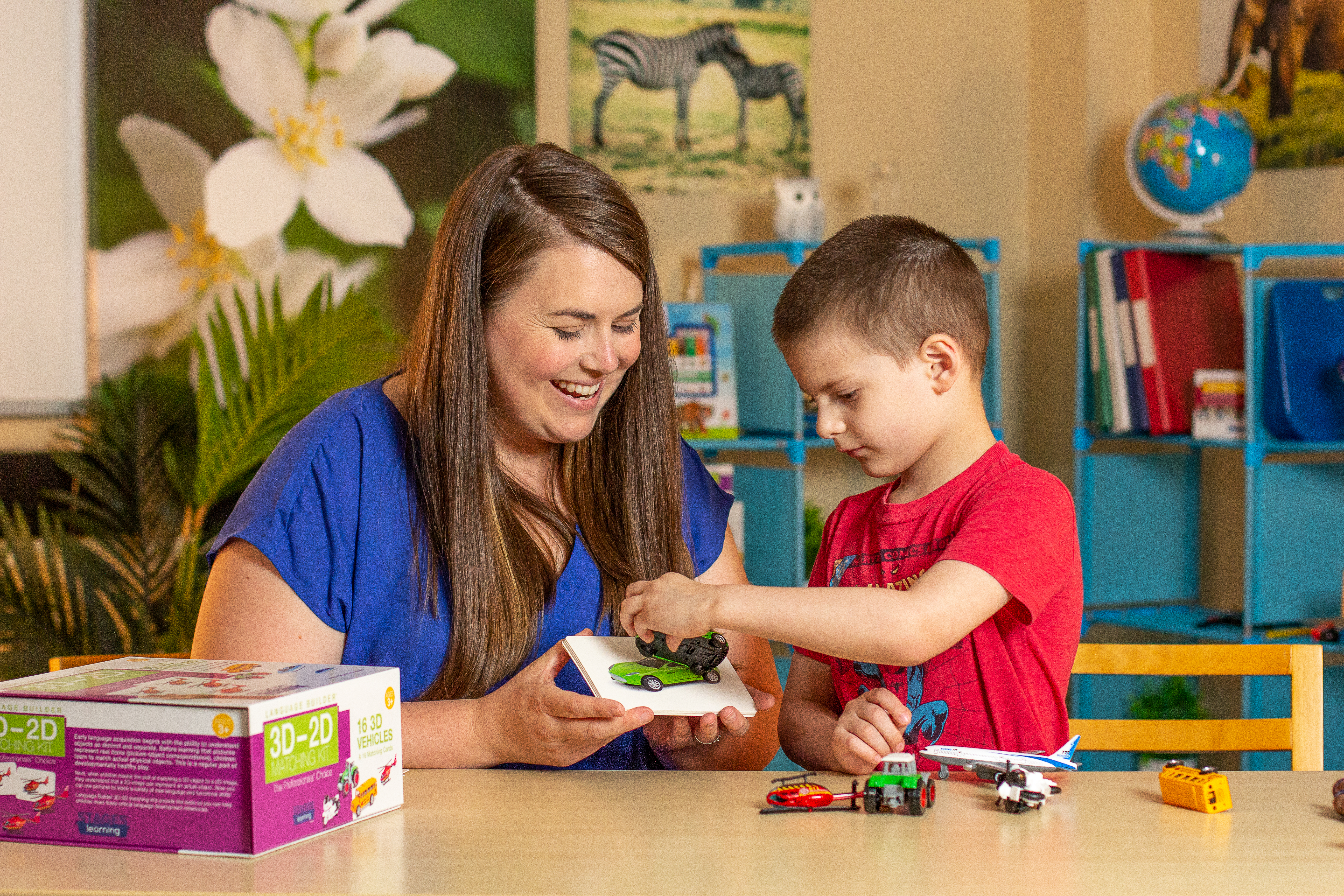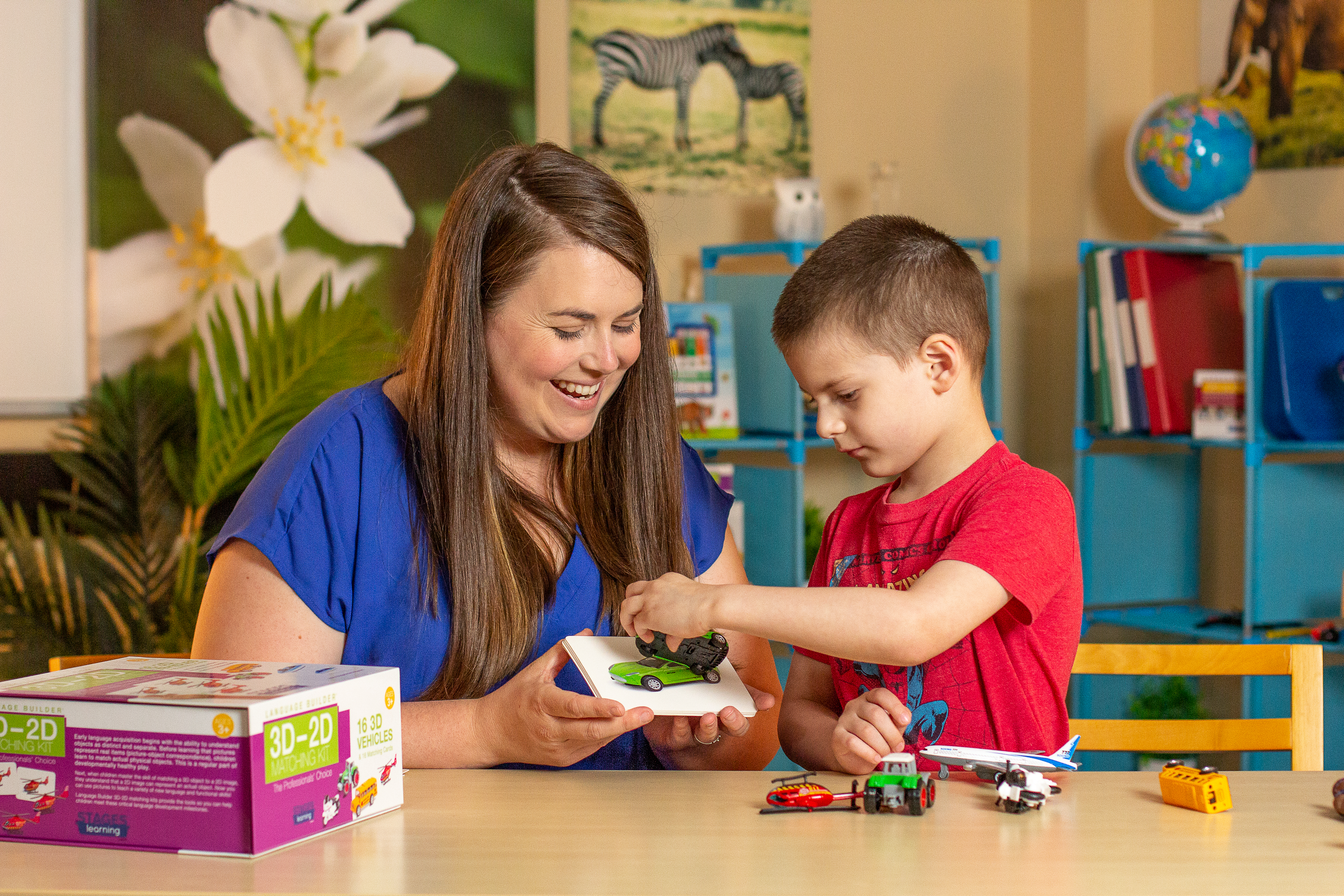How Universal Design for Learning Powers the ARIS® Autism Curriculum
A Research White Paper
What Is UDL?
Based on extensive research into the science of learning, Universal Design for Learning (UDL) is a framework that can be used to optimize the design of teaching and learning for all students. Developed by Dr. David Rose from the Harvard Graduate School of Education (HGSE) and the staff at CAST, UDL embraces the understanding that all individuals learn differently. UDL helps educators focus on the “why,” “what,” and “how” of learning to customize the experience for each learner by building options and flexibility into instructional practices. Originally focused on neurodiverse learners, researchers soon discovered that UDL benefits everyone.
The UDL framework integrates what we now know about brain operations to help design environments to support all kinds of learners. The framework entails three components: engagement, representation, and expression.
1. Engagement
This is the “why” of learning and the understanding that there are differences in what each student might find enticing to learn.
2. Representation
This is the “what” of learning and relates to how all students have their unique reactions and preferences to different kinds of materials or mediums presented to them.
3. Action & Expression
These are the “hows” of learning that explain why some students excel when expressing understanding in one way – such as via a quiz – and other students excel when explaining their understanding of a topic in another way – such as an oral presentation or a piece of art.
UDL does not limit its benefits to certain types of learners – it provides avenues for all learners to access knowledge. Indeed, embedding UDL principles in design is helpful for everyone, often in unanticipated ways. One example from outside of the classroom is often used to illustrate the unanticipated benefits of providing multiple ways of accessing – in this case – our physical spaces. Curb cuts, originally designed to only benefit people in wheelchairs were found to have many other unanticipated but useful purposes: parents pushing strollers, people wheeling grocery carts out to a car, elderly people who find stairs challenging, and so on. Similarly, adding alternative (alt) text to visual images online can provide audio or printed word access to help explain and give context to an image for people with low vision but can also benefit people who are not strong visual learners or who learn more effectively when they can read about and view an image at the same time. UDL emphasizes diversity instead of disability helping to ensure that everyone has access to learning.
How to Maximize Learning Through Each UDL Component
To optimize UDL in their classrooms, teachers need to be provided with curricula that embed and support the diverse needs of their students and allow for flexibility and choice in how students can engage, respond, and express their understanding. Giving educators options to personalize learning at every stage in the UDL framework maximizes the chances for student success.
1. Engagement: Exploring “Why” Students Are Motivated to Learn
Learners vary a great deal in what they find engaging and motivating. Some learners might like novelty, while for others, learning something completely new might cause them to shut down. Similarly, for some learners working in groups might be motivating, while for others working alone is preferable. For a kinesthetic learner, learning multiplication tables might work better when they can do so while jumping on a mini trampoline and shouting out the answers, while for another student, a quiet room for sorting through flashcards works more effectively.
Providing multiple ways for students to engage with materials provides options so that each student can use what works best for them. Allowing options for working with others in a large group, in pairs, or alone can allow students to interact in a way that suits them best. Providing multiple paths through an assignment while also minimizing distractions and facilitating personal coping skills can help promote beliefs about competence and help students feel motivated to succeed.
2. Representation: “What” Ways Learners Best Perceive and Comprehend Information
Representation – presenting a variety of materials through different mediums – is important to support learners by letting them play to their strengths. In any learning environment, there will be some with preferences for learning through listening, while others may learn better with visuals such as photo-based pictures. For some, disabilities may prevent their ability to learn through certain modalities altogether. Students who are deaf, by necessity, need to be taught using visuals.
Further, consideration should be given as to how materials are displayed within the medium. For example, the size and color of the font can affect learning; as can the volume and pitch of verbal communication. Some learners may find that in some cases they prefer one medium and in other cases, they prefer a different medium based upon how the materials are communicated. Even if a student learns better through one medium, sharing information through multiple means is helpful for all learners and some learners may benefit from a combination of mediums. Providing educators with flexibility and options to adapt how they communicate information to their students will help students learn in the way they prefer
3. Action & Expression: Looking at “How” Learners Best Show Their Knowledge
We have all encountered students who shine at writing essays and others whose artistic abilities best help them demonstrate their knowledge and understanding. It is no surprise that if we allow pupils to demonstrate their learning in a variety of media, more students will be successful. Some learners may prefer to show what they have learned by writing a paper, while other students may prefer to share a speech or presentation with their class. Some students might like to express their understanding by creating something and other students might prefer a more concrete expression such as writing down their understanding as a list.
In addition to providing students with a wide range of options for how to showcase what they have learned, designing learning to meet Action & Expression goals, also requires providing students with access to the tools and assistive technologies they need to be able to express their learning. Adaptive keyboards or mice, braille machines, access to programs for creating video or other visual content, and access to the physical materials to create models are all examples of the types of access students will need to be able to best express their understanding. For educators, having access to the requisite resources and creative ideas to support students demonstrating knowledge in a manner that optimizes the students’ strengths is crucial.

ARIS and UDL
The ARIS® Academic Readiness Intervention System (ARIS) Language Builder is a comprehensive personalized learning curriculum for moderate to severe autistic students and/or those with significant cognitive delays. ARIS is grounded in the principles of Applied Behavior Analysis (ABA) but modernized to reflect the progressive trends in ABA which allow for the integration of UDL principles.
ABA is an evidence-based therapy practice that helps students learn skills and lessen problem behaviors. The central idea behind ABA is that reinforcing certain behaviors will lead students to repeat those behaviors. Progressive ABA embraces a more child-centered, adaptive approach, rather than the rigid traditional ABA design. Progressive ABA techniques provide a natural structure that draws on the strengths of both ABA and UDL interventions to better serve autistic students and related learning challenges. Using progressive ABA strategies ARIS has been designed with intentionality to provide teachers with easy ways to teach their students using multiple means of engagement, representation, and expression.
ARIS has a significant advantage over other tools and curricula designed to work with autistic students because, during the development of ARIS, staff at STAGES® Learning were able to work closely with graduate students and faculty at HGSE to embed UDL principles into the creation of this new curriculum.
ARIS provides a clear structure for teachers, parents, and therapists to use ABA to support their child or student’s learning and development in the manner that best meets that individual’s learning needs. At the same time, the ABA instructions used in ARIS support the use of flexible learning options to meet the students where they are.
As detailed below, ARIS architects intentionally embedded UDL practices throughout the structure of the curriculum.
ARIS Provides Multiple Means of Engagement
- Each of the 202 lessons in ARIS provides flexible lesson plans that include progression and differentiation suggestions so that each learner can stay motivated and engaged with strategies that work best for that specific student.
- ARIS places a strong emphasis on Whole Child development. ARIS lessons include both a structured ABA-based lesson format, as well as a less formal, more natural, and playful Whole Child lesson component. These Whole Child activities offer multiple ways to provide engagement and learning based on the needs of the child and can often be used to include peers to enhance social-emotional development. These activities provide teachers with ways to differentiate each exercise based on student needs.

- The Token System within ARIS provides options for teachers to use everything from a simple chart to increasingly complex systems using play coins. The Token Economy can be adjusted as needed to fit a specific student’s ability level and can also be adapted over time for that same student as the student grows and their engagement needs shift.
- ARIS provides teachers with all of the tools they need to track a student’s preferences by using a preference assessment to make note of what types of interventions and reinforcers the student prefers and what strategies best motivate that individual student. Teachers are also encouraged to use prompting that works best for each specific student and are provided with a hierarchy of possible prompting strategies.
- In addition to physical materials, ARIS also has a digital platform that enables educators to conduct lessons and present materials to students digitally to support those students who learn best with technology.
ARIS Provides Multiple Means of Representation
- The ARIS Implementation Guide includes detailed directions on how lessons can be adapted to support learners who communicate in ways other than through speech. ARIS can and has been adapted to support learners who use, for example, sign language or a Picture Exchange System for communication.
- Task Analysis (TA) is used within the ARIS system and teachers can use standard examples or modify a TA to provide a customized approach that works best for a student. Some students might work well with the provided TA while others may need much more specific TAs broken down in a granulated way and using images or 3d objects (both of which can be found in the ARIS curriculum kit) that the student can relate to most effectively. ARIS includes detailed instructions for how to best adapt task analyses to meet the student’s learning style.
- The Whole Child expansion activity, mentioned above, that is paired with a lesson plan provides dozens of avenues for allowing students to access the curriculum and learn through doing. It provides different paths to help encourage generalization. Each of the activities has been carefully calibrated using UDL to provide a variety of options so that decisions can be made about what might work best for a specific child or small group.

ARIS Provides Multiple Means of Expression
ARIS assessments are observational, providing the instructor with the freedom to allow the students different ways of demonstrating their understanding. If the student is struggling in one format, the instructor can provide another avenue for the student to demonstrate understanding. The goal is focused on learning in a way that best suits each child and allows them to be successful.ARIS lessons are designed to be flexible to allow students to show their understanding in multiple ways. Even simple lessons allow for non-verbal answers such as pointing to a card, placing a teacher's hand over the child’s hand to help guide the child to identify an object or card or reinforcing approximations of a response as the student moves along the learning path.
UDL is embedded in each of the ARIS curriculum’s seven content areas to provide flexibility in how the students engage, access, and express their understanding. For example, early reading and literacy lessons can be adapted so that if a particular student shows ease in learning sight words, and struggles to read phonetically, more sight words can be introduced before focusing on phonetic-only reading instruction.
ARIS provides teachers with all of the various tools and manipulatives – everything a teacher needs is included in the ARIS kit -- to help provide the learner with options that work best for them. Because ARIS is a newly developed curriculum, it was able to make use of the latest research, proven practices, and strategies for teaching autistic students and those with similar learning challenges. Incorporating and joining forces between cutting-edge, progressive ABA practices and UDL, and using an iterative design process with assistance from advisors at the Harvard Graduate School of Education, the ARIS curriculum provides educators with the most effective curriculum for teaching autistic students.

L.F. Stebbins, M.Ed. M.L.I.S.
L.F. Stebbins has more than twenty-five years of experience in higher education with a background in library and information science, instructional design, research, and teaching. She has an M.Ed. from the Technology Innovation & Education Program at the Harvard Graduate School of Education and a Masters in Information Science from Simmons College. For twenty years she created and led media literacy and research skills programs for students and faculty at Brandeis University. Currently she is the Director at research4Ed.com and the Director for Research at Consulting Services for Education (CS4Ed). For more about Leslie visit LeslieStebbins.com.




